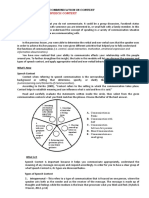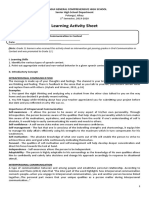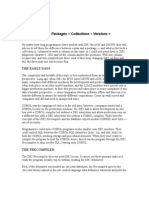0% found this document useful (0 votes)
5 views30 pagesModule 3 Lesson 1
The document discusses various types of speech contexts, focusing on intrapersonal and interpersonal communication, as well as public speaking. It defines intrapersonal communication as self-dialogue and interpersonal communication as interaction with others, highlighting their importance in personal and professional settings. Additionally, it provides tips for effective public speaking and emphasizes the need for speakers to be aware of their audience's reactions and their own nonverbal cues.
Uploaded by
brayanrafael111Copyright
© © All Rights Reserved
We take content rights seriously. If you suspect this is your content, claim it here.
Available Formats
Download as PDF, TXT or read online on Scribd
0% found this document useful (0 votes)
5 views30 pagesModule 3 Lesson 1
The document discusses various types of speech contexts, focusing on intrapersonal and interpersonal communication, as well as public speaking. It defines intrapersonal communication as self-dialogue and interpersonal communication as interaction with others, highlighting their importance in personal and professional settings. Additionally, it provides tips for effective public speaking and emphasizes the need for speakers to be aware of their audience's reactions and their own nonverbal cues.
Uploaded by
brayanrafael111Copyright
© © All Rights Reserved
We take content rights seriously. If you suspect this is your content, claim it here.
Available Formats
Download as PDF, TXT or read online on Scribd
/ 30




















































































